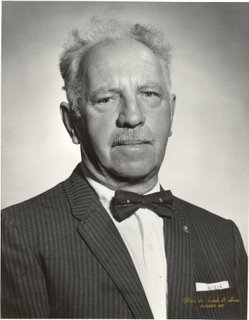Sometime in the early 1950s, my uncle, Harry Honig, bought a gas station about a quarter-mile east of Jack’s Place. It had been a garage and gas station operated on and off since the 1930s. As a child during World War II, I remember that it had a small red siren attached to it that was powered by the garage’s air compressor, and I can still recall how the siren’s shrill sound announced that it was time for my father to don his white hat and stop traffic during the air raid drills.
I think Harry bought the garage to give him something to do during the winter months when he was not farming. During the summer months, for a year or two, his daughter, Leona, operated the gas station, since Harry would be busy on his farm. The structure was a wooden structure with a tin roof. Harry was not a mechanic, and didn’t do any automobile repairs there, and just operated the facility as a gas station and a place to store his farming equipment off-season. There were two gas pumps: one for regular gasoline and one for “Ethyl”, or high test gasoline. Like the driveway at Jack’s Place, Harry’s driveway consisted of small multicolored pebbles bought by the dump truck load from some supplier in Pittsfield, Massachusetts. The pebbles were about one to two inches deep and had to be refreshed every couple of years as the weight of automobiles would eventually press them into the dirt base.
One Sunday morning Harry arrived at his gas station and found that a large “18 wheeler” tractor-trailer had parked in his driveway, perpendicular to the highway, but obscuring the view of the gasoline pumps for westbound drivers on Route 20. The truck driver was nowhere in sight, and there was no message on the vehicle explaining why it was parked there, or where the driver was. Harry was angered and frustrated as he felt that he was losing business. Finally, he parked a tractor that he had stored in the garage closely in front of the truck so that it couldn’t be moved. Later that day the driver returned, and Harry demanded some small monetary compensation before he would move the tractor and free the truck. The truck driver refused and left. The truck drive contacted the New York State Police, who dispatched a young Trooper to the garage to resolve the problem.
The Trooper ordered Harry to move the tractor, but Harry refused, telling the Trooper he would move his tractor when he was paid. They argued, and the Trooper realized that he was powerless to make Harry comply with his directive since the truck and the tractor was on Harry’s private property where he had no jurisdiction. Angered, the Trooper got into his gray Ford patrol car, and ripped out of the driveway, spinning the wheels of his vehicle as he traversed the driveway, sending the pebbles flying and leaving two parallel ruts in the driveway, down to the dirt base.
The Trooper didn’t know Harry and certainly didn’t know that Harry had been the Nassau town’s Justice of the Peace for many years, and was currently its elected Town Supervisor. Harry, of course, knew all of the senior members of the State Police stationed at the barracks in East Greenbush, and he telephoned the barracks and explained the situation to the Sargent in charge, detailing how this brash young Trooper had torn up his driveway.
About an hour later, the young Trooper returned, this time with a very different attitude. After some discussion, the truck driver gave Harry an agreed-upon sum of money as compensation for his lost business, and Harry moved the tractor and the truck left. Then Harry gave the Trooper a rake, and with satisfaction supervised as the Trooper raked the pebbles to fill in the ruts he had created, as he had been ordered to do so by his Sargent.









